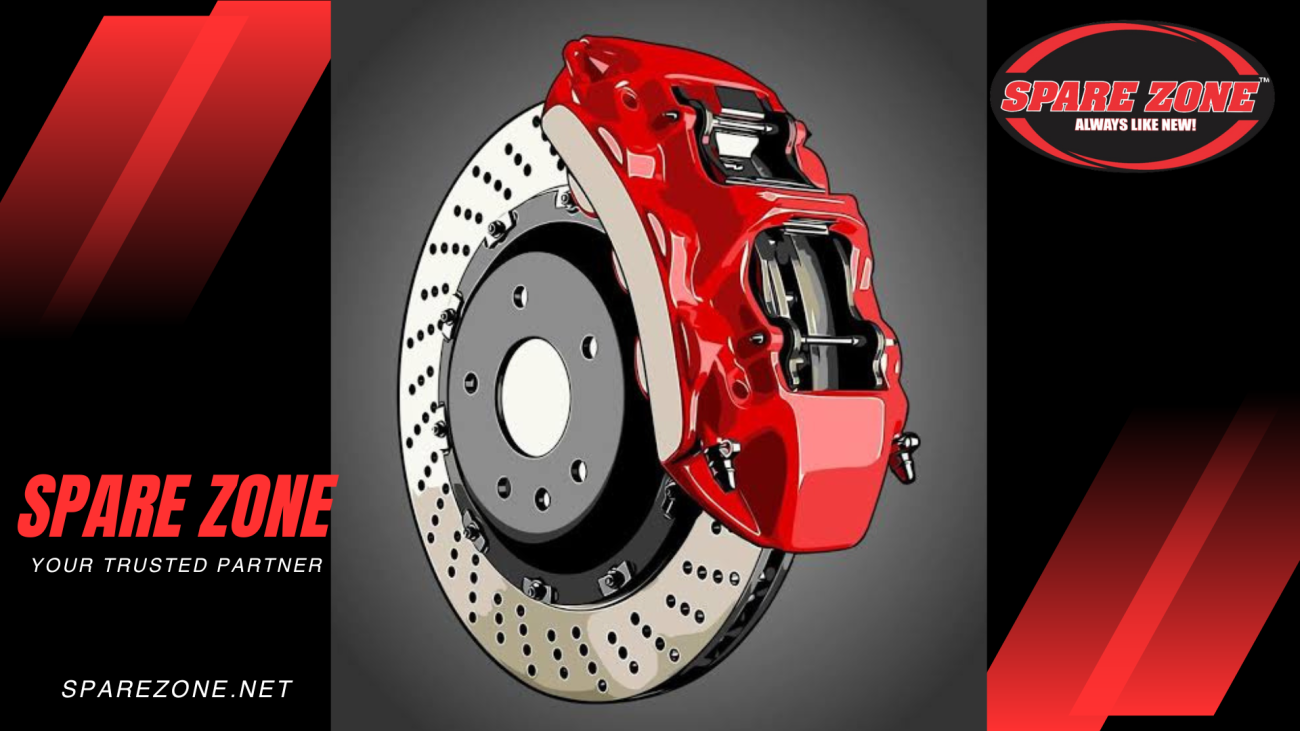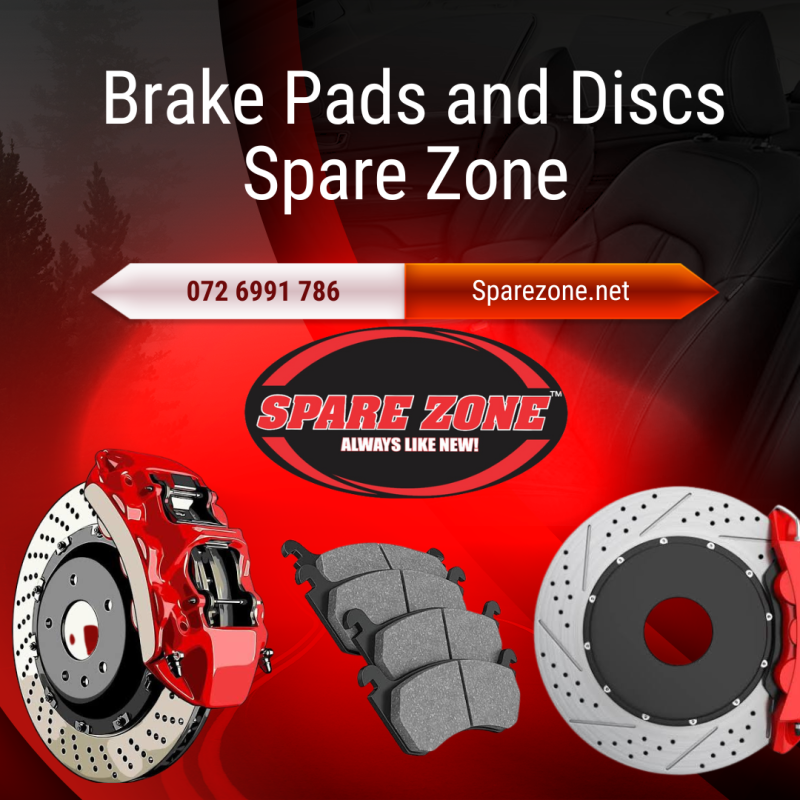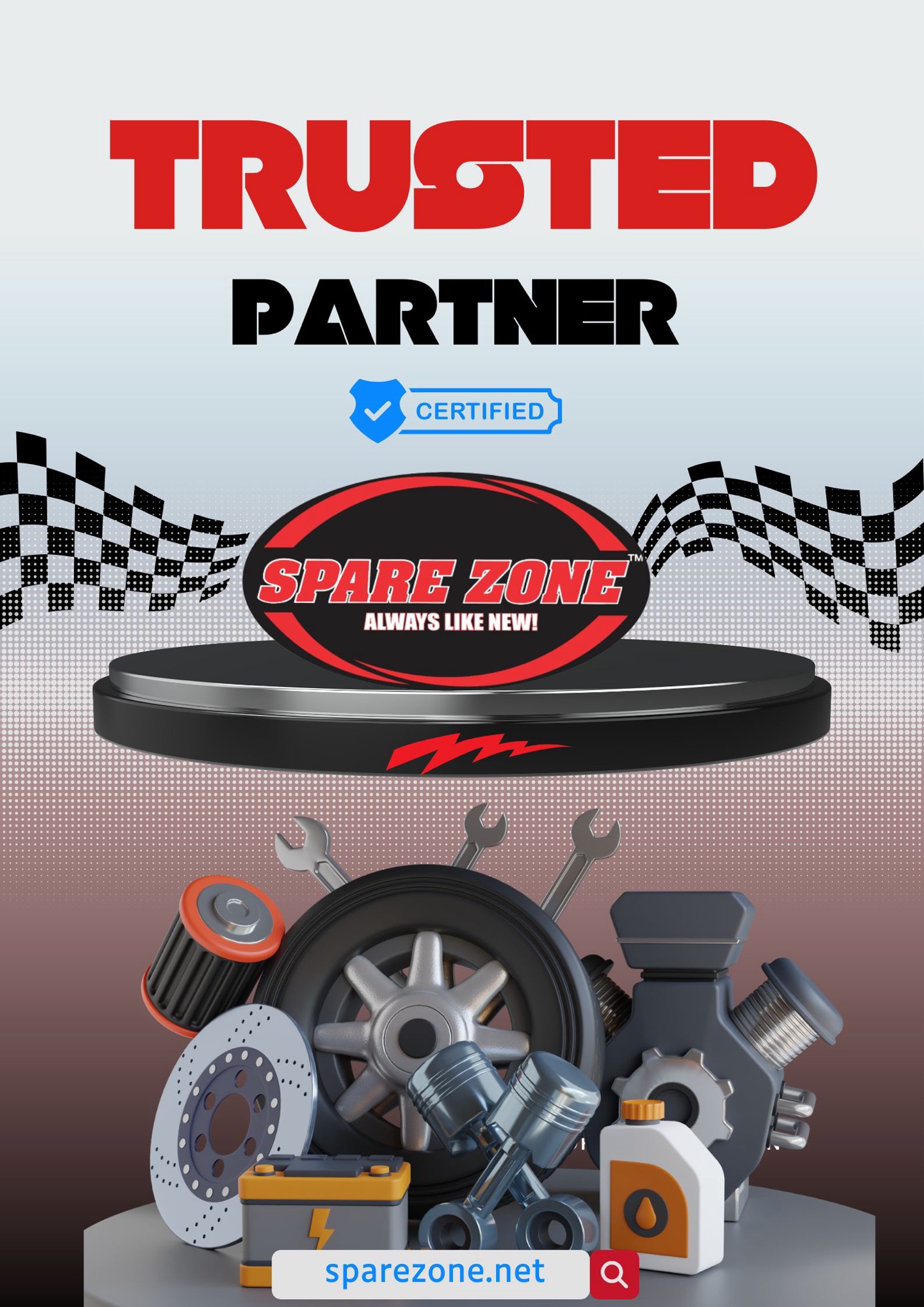
At Spare Zone we know that keeping your vehicle’s braking system in top condition is vital for safety on the road. This guide will help you understand how brake pads and discs work, identify the signs of wear, and learn when and how to replace them.
Understanding Brake Pads and Discs
Brake Pads are essential components that press against the brake discs (rotors) to create friction and stop the vehicle. The type of brake pads you use matters:
• Metallic Pads: These are durable and dissipate heat well, though they can be noisier and may wear the brake discs more quickly.
• Ceramic Pads: Quieter and cleaner, ceramic pads create less dust but tend to be more expensive.
• Organic Pads: Made from rubber, glass, or Kevlar, they are softer and quieter, but they wear out faster than other types.
Brake Discs (Rotors) are metal discs attached to the wheels. When you press the brake pedal, the brake pads clamp onto the discs, slowing or stopping the vehicle. Discs come in two main types:
• Solid Rotors: Commonly used in regular vehicles and are great for everyday driving.
• Vented Rotors: These help dissipate heat more effectively, making them ideal for high-performance or heavy-duty use.
Signs That You Need New Brake Pads or Discs
Maintaining your vehicle’s braking system is critical for safety. Here are signs that your brake pads or discs may need replacing:
1. Squealing or Squeaking: This noise often indicates that your brake pads are worn down and need to be replaced.
2. Grinding Sound: If you hear grinding, the brake pads are likely worn through, causing metal-to-metal contact, which can damage your discs.
3. Vibrations When Braking: If your brake pedal or steering wheel vibrates when you apply the brakes, your discs may be warped.
4. Longer Stopping Distance: If your car takes longer to stop than usual, worn brake pads or discs could be the problem.
5. Visual Inspection: Check the thickness of your brake pads; if they are less than 6mm, it’s time for a replacement. Also, inspect the brake discs for grooves or uneven wear.
When Should You Replace Brake Pads and Discs?
Brake pads and discs have varying lifespans depending on driving conditions and materials:
• Brake Pads: Typically, they should be replaced every 30,000 to 70,000 kilometers.
• Brake Discs: These often last longer than brake pads but should be checked regularly and replaced if damaged or too thin.
How to Maintain Your Brake Pads and Discs
To ensure your brake system performs well:
• Regular Inspections: Have your brakes checked during routine services.
• Drive Gently: Avoid aggressive braking and high speeds to reduce wear on your brake components.
• Use Quality Parts: High-quality brake pads and discs will last longer and provide better performance.
Why Choose Spare Zone?
At Spare Zone we offer a wide selection of top-quality brake pads and discs that are built to withstand the rigors of driving in South Africa. Whether you drive a compact car or a high-performance vehicle, our products are designed for durability, safety, and performance. With competitive pricing and a commitment to customer service, Spare Zone is your trusted source for vehicle spare parts.

Visit SpareZone.net today to explore our range of brake system components and other vehicle spare parts. Keep your vehicle safe and road-ready with high-quality products from Spare Zone.

